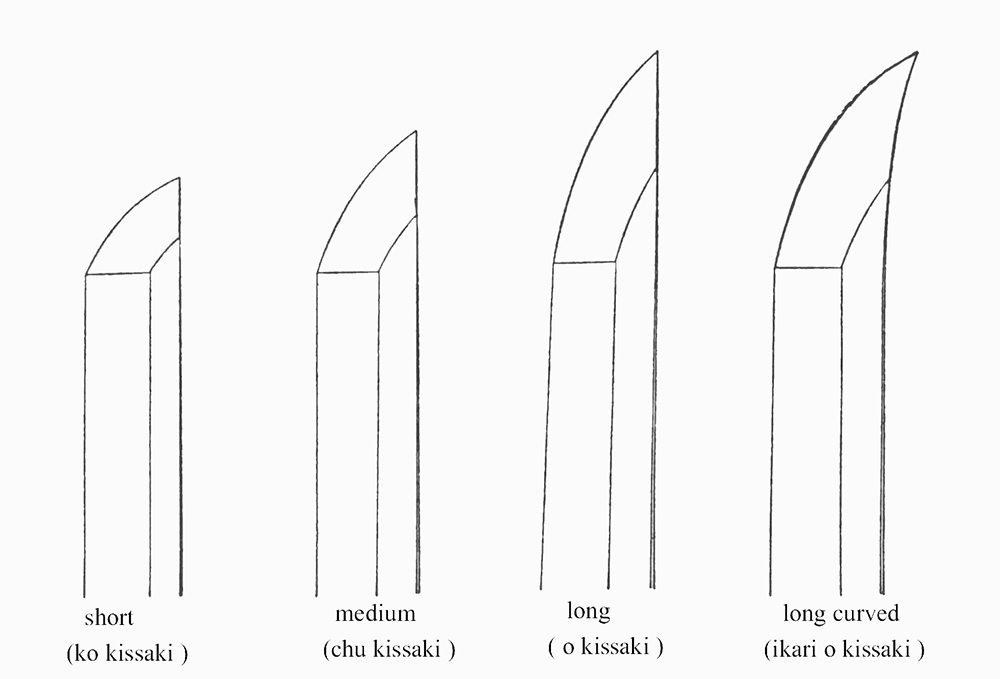WHAT IS THE KISSAKI ON JAPANESE SWORDS?

Whether it is Katana, Wakisashi, Tanto, Tachi or Kodachi, all traditional Japanese swords come with a kissaki. However, unless you are familiar with these swords, this may be the first time you hear the word "kissaki". So, what is a kiss knife and what role does it play in the process of creating high-quality Japanese swords?
Kisaki explained
The kissaki is essentially the tip of a traditional Japanese sword. As shown in the picture above, it is formed where the blade begins to shrink and eventually forms a sharp point. All traditional Japanese swords have a kissaski, even the smaller companion sword worn and used by samurai. Without this essential element, the traditional Japanese sword will not be able to function on the battlefield.
Different types of Kissaki

Of course, there are different types of kisses, each with a unique design. For example, Okissaski has a medium-length point, while kokissaki has a short-length point. The third type of kissing is ikuri-okisasski, which is characterized by a unique design with the tip of the sword bent backwards.
How to do this
kissaki is usually made by grinding metal near the tip of the sword. This is not an easy task, nor is it fast. It usually takes several weeks for a swordsmith to sharpen the sword and make a kissaki .
When making kissaski, the swordsmith must be careful not to grind the metal of the blade too much. Ideally, enough metal should be ground off to form a sharp tip, thus maintaining the overall shape and design of the blade. If too much metal is removed, the end result is a tedious weapon that is ineffective in combat.
The importance of Kissaski
Kissaski plays a key role in the function of traditional Japanese swords. It aims to increase the versatility and lethality of the sword by creating sharp points that can be used for piercing attacks. Without a clearly defined kiss sword, the samurai would not be able to use the sword for such attacks. They can still use the sword for felling, but the samurai cannot use it for piercing. However, considering that all traditional Japanese swords are made with kissaski, this is not a problem.
Kissaski is just one of the many design elements that create traditional Japanese swords. In feudal Japan, swordsmanship was more than just a pastime; it was an important part of Japanese culture. Swordsmiths devote their lives to making the best swords in the world, and this attention to detail is still evident in swords such as katana.
Discover the many attractive options available for Katana swords and custom swords.
Want a unique sword? Feel free to contact us:
Phone: 086 13739276006
Email: [email protected]
Website: www.hanbonforge.com
Custom Sword Page: www.hanbonforge.com/CUSTOM-SWORDS/Custom-Your-Own-Swords

Leave a Comment